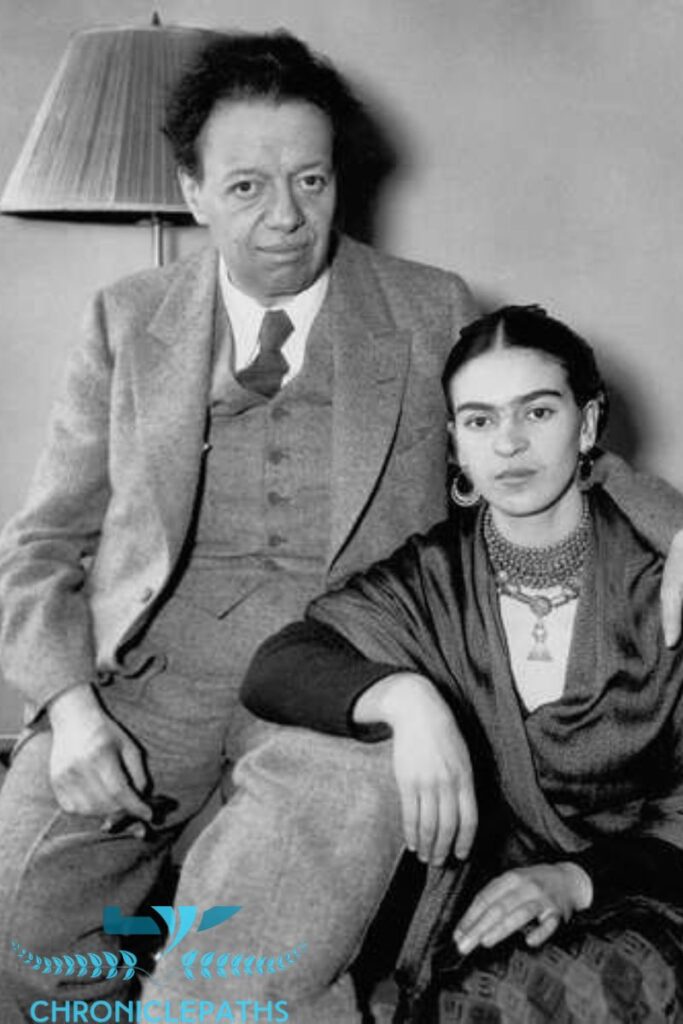Frida Kahlo biography reveals the life of the iconic Mexican artist celebrated for her deeply personal and symbolic paintings that reflect her struggles and culture. Her unique style blends surrealism, realism, and traditional Mexican culture, making her an enduring icon in the art world. This biography delves into her life, art, and legacy that continues to inspire millions.
Early Life and Family Background
Frida Kahlo was born on July 6, 1907, in Coyoacán, Mexico City, in her family home, La Casa Azul (The Blue House). Her father, Guillermo Kahlo, was a German immigrant and a professional photographer, while her mother, Matilde Calderón, was of mixed Spanish and Indigenous descent. Frida often drew inspiration from her multicultural heritage, incorporating Indigenous motifs into her artwork.
As a child, Frida contracted polio, which left her with a limp. Despite this, she was active and adventurous, often playing sports considered unconventional for girls at the time.
A Tragic Accident That Shaped Her Life
At the age of 18, Kahlo’s life took a dramatic turn. She was involved in a near fatal bus accident that fractured her spine, pelvis, and ribs. The injuries left her in severe pain and led to numerous surgeries throughout her life. During her recovery, Frida began painting as a way to express her emotions and cope with her physical limitations.
Her early works were often self-portraits, as she famously said, “I paint myself because I am so often alone and because I am the subject I know best.”
Marriage to Diego Rivera

In 1929, Frida married Diego Rivera, a renowned Mexican muralist known for his political and artistic contributions. Their relationship was tumultuous, marked by infidelity, passionate love, and mutual admiration for each other’s work. Rivera’s influence can be seen in Frida’s paintings, as she embraced bold colors and themes inspired by Mexican folklore.
Despite their marital struggles, including periods of separation, Kahlo and Rivera remained significant figures in each other’s lives, collaborating and supporting each other’s artistic endeavors.
Artistic Style and Notable Works
Frida Kahlo’s art defies easy categorization. Though often associated with surrealism, Kahlo rejected the label, insisting that her works reflected her reality rather than dreams. Her paintings often depicted themes of pain, identity, gender, and politics.
Some of her most notable works include:
- “The Two Fridas” (1939): This double self-portrait explores her dual identity as a mestiza Mexican and European woman, symbolizing her inner conflict.
- “Self-Portrait with Thorn Necklace and Hummingbird” (1940): A powerful depiction of pain and resilience, incorporating symbolic elements like animals and foliage.
- “Henry Ford Hospital” (1932): A deeply personal work portraying her anguish after a miscarriage.
- “The Broken Column” (1944): Reflects her physical suffering, with her fractured spine represented by a crumbling column.
Through her art, Kahlo not only expressed her personal struggles but also celebrated Mexican culture, often including vibrant depictions of Indigenous traditions, flora, and fauna.
Political Activism and Cultural Identity
Kahlo was an ardent communist and a staunch advocate for social justice. Her political beliefs were reflected in her art and life choices. She supported workers’ rights and was vocal about Mexico’s Indigenous heritage and its importance in shaping national identity.
Her home, La Casa Azul, became a hub for intellectuals and political activists, including exiled Russian revolutionary Leon Trotsky, with whom Frida had a brief affair.
Later Years and Health Struggles
Kahlo’s health continued to deteriorate in her later years due to the lasting effects of her accident and subsequent surgeries. Despite her physical limitations, she remained creatively prolific, even painting from her bed when bedridden.
In 1953, Frida held her first solo exhibition in Mexico. Determined to attend despite her condition, she arrived in an ambulance and greeted guests from a bed placed in the gallery.
Frida Kahlo passed away on July 13, 1954, at 47. The official cause of death was a pulmonary embolism, though some speculate it may have been an intentional overdose.
Legacy and Cultural Impact
Frida Kahlo’s influence has transcended the art world, becoming a global symbol of feminism, resilience, and individuality. Her iconic style, characterized by her floral headpieces, traditional Tehuana dresses, and unibrow, has made her an enduring cultural figure.
La Casa Azul, her childhood home, is now the Frida Kahlo Museum, attracting millions of visitors from around the world. Her works are celebrated internationally, housed in prestigious galleries and museums.
In recent years, Frida’s image has been commercialized, appearing on everything from clothing to merchandise. While this has brought her art to a broader audience, it has also sparked debates about cultural appropriation and the commercialization of her legacy.
Conclusion
Frida Kahlo’s life and art remain a testament to the power of creativity, resilience, and authenticity. Her deeply personal works continue to inspire artists and admirers worldwide, while her advocacy for social justice and cultural pride resonates with contemporary audiences. Frida’s legacy is not just her art but her unyielding spirit, reminding us to embrace our individuality and find beauty in life’s struggles.
FAQS
Frida Kahlo’s “The Two Fridas” is one of her most famous works, symbolizing her inner emotional struggles and dual heritage.
Frida Kahlo died in 1954 at the age of 47, with the official cause of death listed as pulmonary embolism.
